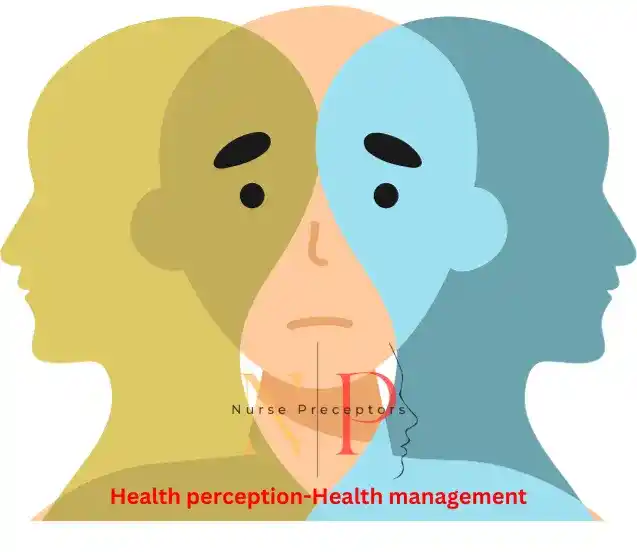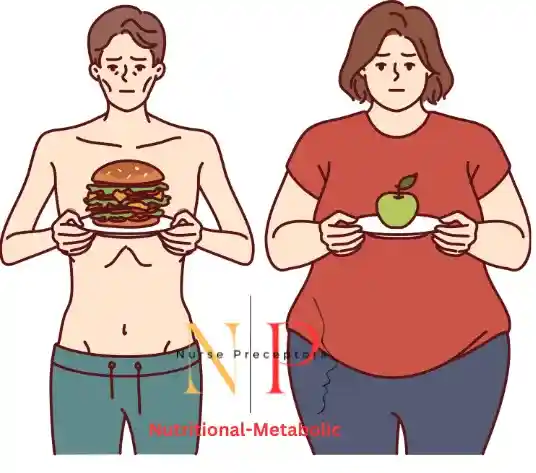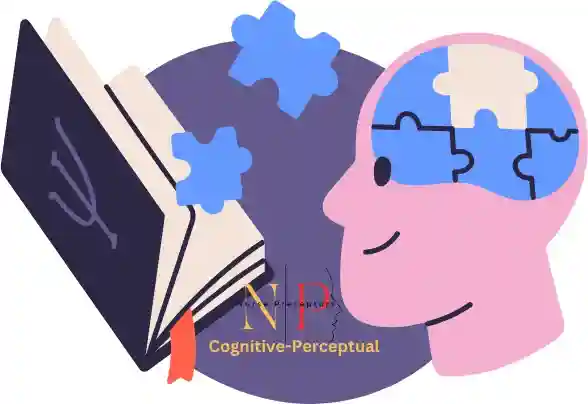Introduction to Gordon’s Functional Health Patterns
To stay healthy and lead a fulfilling life, it is crucial to assess and understand our overall well-being. This is where Gordon’s Functional Health Patterns come into play.
These patterns provide a comprehensive framework for assessing an individual’s health and identifying areas of improvement. This article will delve into the significance of a comprehensive health assessment, explore Gordon’s 11 functional health patterns, and discuss how these patterns can be applied in practice.
History of Gordon’s Functional Health Patterns
Gordon’s Functional Health Patterns were devised by Marjory Gordon in 1987 for the comprehensive nursing assessment of a client. The word “pattern” was used for recurring behaviors to prominent their significance.
Gordon proposed 11 functional health patterns to identify the functional and dysfunctional behaviors in a person. Gordon writes in his book that functional health patterns were first identified by the Boston College School of Nursing in 1974 for the better collection of data in nursing assessment.
These functional health patterns are; health perception-health management pattern, nutritional-metabolic pattern, elimination pattern, activity-exercise pattern, sleep-rest pattern, cognitive-perceptual pattern, self-perception and self-concept pattern, role-relationship pattern, sexuality-reproductive pattern, coping-stress tolerance pattern, value-belief pattern.
After the 12th NANDA conference, the work was initiated on Taxonomy-II by NANDA Taxonomy Committee. The members of this committee expressed their concerns regarding the unclear classification of nursing diagnosis and ease of its use.
Comprehensive guide on : ANCC Magnet Recognition Program
Finally, it was decided by the committee to adapt Marjory Gordon’s 11 Functional Health Patterns for Taxonomy-II for the basis of taxonomic structure. Permission was granted by Marjory Gordon to use and adapt Functional Health Patterns in Taxonomy-II.
After the refinement of Taxonomy-II, at the 14th NANDA conference in April 2000, the Taxonomy-II was presented to NANDA members for further consideration. The Board of Directors of NANDA approved the Taxonomy-II for its use in the nursing process.
What is Health Assessment?
A health assessment is a systematic approach used to assess an individual’s overall health status. This process generally involves a series of questions about a person’s medical history, physical examination, and occasionally, specific clinical tests.
A health assessment aims to dig up any existing health issues, identify possible risks, and give an overall understanding of an individual’s well-being.
The extent of a health assessment varies depending on the context. It can be comprehensive, focusing on all aspects of health including physical, mental, and social dimensions.
Alternately, it can be more specific, centering only on certain aspects like psychological health or nutritional status. Regardless of its scope, the health assessment is a critical tool in healthcare management as it informs the development of personalized care plans.
The outcomes of a health assessment are used to guide healthcare professionals in determining the most applicable interventions to address an individual’s needs. They can also be used to monitor progress in managing chronic conditions or evaluating the effectiveness of treatment strategies.
In addition, health assessments offer valuable information for health promotion and disease prevention strategies. A health assessment may be conducted by a variety of healthcare professionals such as nurses, doctors, physiotherapists, and dietitians.
The process generally starts with gathering information about a person’s medical history, lifestyle habits, and current symptoms or health concerns. This is followed by a physical examination which may include measurements of vital signs, checking body systems, and performing diagnostic tests if necessary.
Importance of Comprehensive Health Assessment
Before we dive into Gordon’s Functional Health Patterns, it is essential to understand the importance of a comprehensive health assessment. A comprehensive health assessment allows healthcare professionals to gather information about an individual’s physical, emotional, and social well-being.
It goes beyond the traditional medical examination and takes into account various aspects of a person’s life that can impact their overall health. By conducting a thorough assessment, healthcare providers can identify potential health risks, develop personalized treatment plans, and empower individuals to take control of their health.
The Significance of Community Health Planning
Community health planning plays a vital role in promoting the well-being of a population. It involves assessing the health needs and resources of a community, identifying priorities, and implementing strategies to address those needs.
By engaging community members and stakeholders in the planning process, community health planning ensures that interventions are tailored to the specific needs and values of the population. It fosters collaboration and empowers individuals to actively participate in improving their health and the health of their community.
Conducting a Community Health Needs Assessment
A community health needs assessment is a systematic process that identifies the health needs and assets of a community. It involves collecting data from various sources, such as surveys, interviews, and existing health records, to gain a comprehensive understanding of the community’s health status.
The assessment examines various factors that influence health, including social determinants, access to healthcare services, and the prevalence of specific health conditions.By conducting a community health needs assessment, healthcare providers and policymakers can identify areas of improvement and develop targeted interventions to address the unique needs of the community.
You May Also Like To Read: Ethical and Legal Issues in Contemporary Nursing
Exploring Gordon’s 11 Functional Health Patterns
Gordon’s Functional Health Patterns provide a holistic framework for assessing an individual’s health. These patterns encompass various aspects of a person’s life and provide a comprehensive view of their overall well-being.
By examining each pattern, healthcare professionals can identify strengths, weaknesses, and areas of improvement in a person’s health. Gordon’s Functional Health Patterns are helpful to identify the three types of health patterns in a person that are functional, dysfunctional, and potentially dysfunctional patterns.
Let’s explore each of the 11 functional health patterns in detail.
Pattern 1: Health Perception-Health Management
This pattern focuses on how individuals perceive their health and how they manage it. It includes factors such as health beliefs, health practices, and the use of healthcare services.

By assessing this pattern, healthcare professionals can understand an individual’s level of health awareness and their willingness to engage in health-promoting behaviors.
Multiple factors contribute to the ability of a person to achieve an optimal level of health such as environment, intact sensory system such as optimum functioning of cognitive, sensory, and motor activities, familial, cultural, and societal values and belief.
This pattern is comprised of two parts understanding (health perception) and control (health management).
Pattern 2: Nutritional-Metabolic
The nutritional-metabolic pattern examines an individual’s dietary habits, nutritional intake, and metabolic function. It helps identify potential nutritional deficiencies, food intolerances, and metabolic disorders.

By understanding this pattern, healthcare professionals can develop personalized dietary recommendations and interventions to improve an individual’s nutritional status.
Sociological, psychological, and physiological factors affect this pattern. Sociological factors such as social or cultural food preference, low income, unsafe or inadequate storage of food, and social isolation.
Psychological factors such as stress may cause the anorexia nervosa and overeating of a person. Physiological factors such as vitamin deficiency.
Pattern 3: Elimination
The elimination pattern focuses on an individual’s bowel and bladder function. It includes assessing bowel habits, urinary patterns, and any issues related to elimination.

By evaluating this pattern, healthcare professionals can identify potential gastrointestinal or urinary problems and provide appropriate interventions or referrals. Elimination is an individualized process that can be influenced by diet, activity, circadian rhythms, stress, age, and culture.
Pattern 4: Activity-Exercise
The Activity-Exercise Pattern examines an individual’s level of physical activity, exercise routine, and ability to engage in activities of daily living.

By assessing this pattern, healthcare professionals can identify barriers to physical activity and provide recommendations to improve an individual’s overall fitness and mobility. Dysfunctions of the cardiovascular, neuromuscular, and respiratory systems are major contributors that affect the energy level and level of a person’s mobility.
Pattern 5: Sleep-Rest
The sleep-rest pattern evaluates an individual’s sleep quality, sleep duration, and any disruptions to their sleep routine. It helps identify sleep disorders, insomnia, or other conditions that may affect sleep patterns.

By addressing this pattern, healthcare professionals can provide strategies to improve sleep hygiene and promote better restorative sleep. Many contributing factors may affect normal sleep patterns such as stress, age, noise, and activity.
Pattern 6: Cognitive-Perceptual
The cognitive-perceptual pattern assesses an individual’s cognitive function, sensory perception, and ability to process information.

It helps identify cognitive impairments, sensory deficits, or cognitive-behavioral issues. By understanding this pattern, healthcare professionals can provide appropriate interventions or referrals to support cognitive well-being.
Pattern 7: Self-Perception-Self-Concept
The self-perception-self-concept pattern focuses on an individual’s self-esteem, body image, and overall self-perception.

It helps identify issues related to self-esteem, body dissatisfaction, or distorted self-perception. By addressing this pattern, healthcare professionals can provide support and interventions to enhance an individual’s self-perception and promote positive self-esteem.
Pattern 8: Role-Relationship
The role-relationship pattern examines an individual’s roles, responsibilities, and relationships with others. It helps identify issues related to role strain, role conflict, or dysfunctional relationships.

By assessing this pattern, healthcare professionals can provide guidance and interventions to improve an individual’s role performance and enhance their relationships. Multiple factors may influence the role and relationship of a person such as age, society, culture, family dynamics, race, gender, and economics.
Pattern 9: Sexuality-Reproductive
The sexuality-reproductive pattern focuses on an individual’s sexual health, reproductive function, and sexual relationships. It helps identify sexual dysfunction, reproductive issues, or concerns related to sexual health.

By addressing this pattern, healthcare professionals can provide education, counseling, or referrals to support an individual’s sexual and reproductive well-being.
This pattern may be influenced by race, gender, anxiety, stress, environment, social and cultural expectations, health status, lifestyle, expression of feelings, and self-concept.
Pattern 10: Coping-Stress Tolerance
The coping-stress tolerance pattern examines how individuals cope with stressors and their ability to adapt to challenging situations. It helps identify maladaptive coping mechanisms, high levels of stress, or ineffective stress management strategies.

By assessing this pattern, healthcare professionals can provide support, resources, and interventions to improve an individual’s coping abilities and enhance their stress tolerance. As per the conceptual framework, four levels of coping and stress response have been described.
Pattern 11: Value-Belief
The value-belief pattern explores an individual’s personal values, beliefs, and spiritual practices. It helps identify values conflicts, spiritual distress, or issues related to belief systems.

By understanding this pattern, healthcare professionals can provide support and interventions to promote spiritual well-being and address any conflicts or distress related to personal values and beliefs.
Applying the Functional Health Patterns in Practice
Now that we have explored Gordon’s 11 functional health patterns, let’s discuss how they can be applied in practice. Healthcare professionals can use these patterns as a framework for conducting a comprehensive health assessment.
By systematically examining each pattern, they can gather relevant data, identify areas of concern, and develop targeted interventions to address the individual’s unique needs.
The patterns also serve as a communication tool, allowing healthcare professionals to effectively communicate with individuals, families, and interdisciplinary teams about a person’s health status and care plan.
Resources for Further Exploration
If you are interested in delving deeper into Gordon’s Functional Health Patterns, there are various resources available for further exploration.
There are various books written on Gordon’s Functional Health Patterns you can download these books on www.pdfdrive.com. Books provide comprehensive information on applying the functional health patterns in nursing practice.
Online resources, such as the North American Nursing Diagnosis Association (NANDA) website, offer additional information and tools for utilizing the patterns in clinical settings.
By utilizing these resources, healthcare professionals can enhance their understanding of the functional health patterns and their application in practice.
You May Also Like To Read : Guide to nursing preceptorship
Benefits and Limitations of Gordon’s Functional Health Patterns
Like any assessment tool, Gordon’s Functional Health Patterns have their own set of benefits and limitations. One of the key benefits is their holistic approach to health assessment, which considers various aspects of a person’s life. This allows healthcare professionals to obtain a comprehensive view of the individual, enabling them to develop individualized care plans that address the person’s unique needs.
The patterns also provide a standardized framework for assessing health, promoting consistency and accuracy in the assessment process.
However, it is important to acknowledge the limitations of Gordon’s Functional Health Patterns. These patterns may not capture all aspects of an individual’s health, as they primarily focus on functional areas rather than specific diseases or conditions.
Additionally, the patterns rely on subjective data provided by the individual, which may be influenced by factors such as cultural beliefs, social desirability bias, or limited health literacy.
Healthcare professionals should be mindful of these limitations and utilize additional assessment tools and resources to ensure a comprehensive evaluation of an individual’s health.
Conclusion
Optimal health is a lifelong journey that requires a comprehensive understanding of our well-being. Gordon’s Functional Health Patterns offer a valuable framework for assessing an individual’s health and identifying areas of improvement.
By exploring each of the 11 functional health patterns, healthcare professionals can gather relevant data, develop personalized care plans, and empower individuals to take control of their health.
By utilizing these patterns in practice, healthcare professionals can unlock the key to optimal health and promote the well-being of individuals and communities.
References:
- Newfield, S.A., Hinz, M.D. and Scott-Tilley, D., 2007. Cox’s Clinical Application of Nursing Diagnosis: Adult, Child, Women’s, Mental Health, Gerontic, and Home Health Consideration. FA Davis.
- Gordon, M., 2014. Manual of nursing diagnosis. Jones & Bartlett Publishers.
- Carpenito-Moyet, L.J. ed., 2006. Nursing diagnosis: Application to clinical practice. Lippincott Williams & Wilkins.
- Hooper JI. The family receiving home care: functional health pattern assessment. Home Care Provid. 1996 Sep-Oct;1(5):238-43; quiz 244-5. doi: 10.1016/s1084-628x(96)90041-6. PMID: 9272025.
- Berman, A., Snyder, S. and Frandsen, G. (2022) Kozier & Erb’s fundamentals of nursing: Concepts, process, and Practice. Boston: Pearson Education Limited.
What’s up, everything is going perfectly here and ofcourse every one is sharing data, that’s truly excellent, keep up writing.
Pretty nice post. I simply stumbled upon your weblog and wanted to mention that I’ve truly
loved browsing your weblog posts. After all I will be subscribing
on your rss feed and I am hoping you write again very soon! I saw similar here:
Ecommerce
Wow, marvelous weblog structure! How long have you been blogging
for? you make blogging look easy. The whole look of your site is great, as well as the content!
You can see similar: e-commerce and here ecommerce
Ηurrah, thɑt’s what I was ѕeeking for, what a stuff!
eҳisting here at thіs webpage, thanks admin of this website.